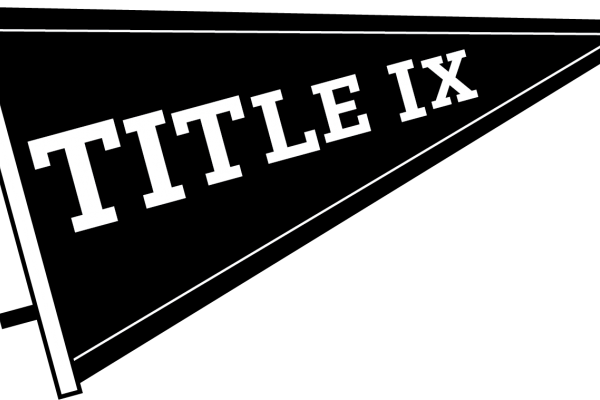January 20, 2021
Schools under Title IX magnifying glass amid COVID-related cuts

An original Sports and Society article by Darby Clark
As universities across the country reckon with immense financial loss due to the global pandemic, some have looked to make cuts in their athletic departments to try to stem the fiscal hemorrhage.
They have, however, hit a bump in the road: Title IX.
Schools such as the University of Iowa and William & Mary have faced the threat of legal action for cutting female sports in violation of Title IX, while student athletes and alumni at other schools are fighting against the elimination of various sports.
This isn’t the first time schools have come under fire for Title IX violations, and it probably won’t be the last. Many commit intentional discrimination for years with no one calling their bluff, because it takes great effort to do so, B. David Ridpath, former Division 1 wrestling coach and current associate professor of sports management at Ohio University, said.
“It is tough,” Ridpath said. “It’s a lengthy process when you go through a Title IX lawsuit, but I tell you, most every school would lose if they’re sued.”
Nancy Hogshead-Makar, 1984 U.S. women’s swimming Olympic gold-medalist and head of ChampionWomen, a nonprofit that provides legal advocacy for girls and women in sports, said most schools back down when faced with the threat of a lawsuit, because they can’t deny the plain evidence.
“The facts are really clear: how many athletes are in your men’s program, how many athletes are in your women’s program, how many scholarship dollars are you giving, and how are you treating them? It is very cut and dried in terms of the factual terms and issues,” Hogshead-Makar said.
William & Mary had declared it would cut women’s volleyball, men’s indoor and outdoor track and field and both men’s and women’s swimming and gymnastics. It announced Oct. 19 in response to the threat of a lawsuit that it would reinstate women’s gymnastics, swimming and volleyball to better comply with Title IX regulations.
“They went to them and they said, ‘Here are the facts, here’s the law, reinstate the women’s teams,’ and they saw the writing on the wall, and they said, ‘OK’. And that is how the law is supposed to work,” Hogshead-Makar said.
Title IX demands equality for men and women athletically in finances, treatment and proportionality, the latter of which presents some significant challenges as schools place high value on football and men’s basketball, Ridpath said.
“In most public schools, female enrollment is larger than male enrollment, and then football skews the entire process, if you will, because there’s no comparable female sport,” Ridpath said.
Hogshead-Makar said proportionality encompasses much more than just an equal number of sports teams for men and women.
“Fifty-fifty is perfect if the student body is 50-50, but remember, because sports are sex-segregated, right now, basically two out of every 100 male students gets to participate in sports, and only 1.5 in every 100 women get to participate in inter-collegiate athletics,” Hogshead-Makar said.
The pandemic has given many schools who already wanted to cut sports an excuse to do so, Ridpath said. On the other hand, however, it has allowed new space for athletes to fight back against inequality, Hogshead-Makar said.
Despite the filing of an official legal complaint in September by members of its women’s swimming team, the University of Iowa has yet to announce any intent to reinstate the sport after deciding to cut it, along with men’s swimming, gymnastics and tennis.
“Dropping sports is not a mandate; it’s a choice, even in COVID,” Ridpath said. “It does not need to happen. There are many other places to cut before you drop a sport and candidly, when you drop a sport, you’re not saving that much money. Very few athletic departments turn an actual profit.”
Ultimately, Ridpath said, cutting teams could not only raise the ire of alumni and donors who want a broad-based athletic program, but could also hold significant consequences for the school as a whole.
“All those sports, those kids are at least for the most part paying partial tuition—at least,” Ridpath said. “They’re not getting full scholarships. So it’s really just a bad move from the school from a public relations perspective [and] from a finance perspective.”
Ridpath said college sports administrations should stop dropping sports and start managing budgets better, even if it means cutting into football and men’s basketball budgets—an action he said most schools are afraid to take.
“Saying they just can’t afford it is just simple sleight of hand,” Ridpath said. “They can afford it, they just don’t want to do it. There is excess fat to cut if you truly, truly want to have a broad-based athletic program.”
